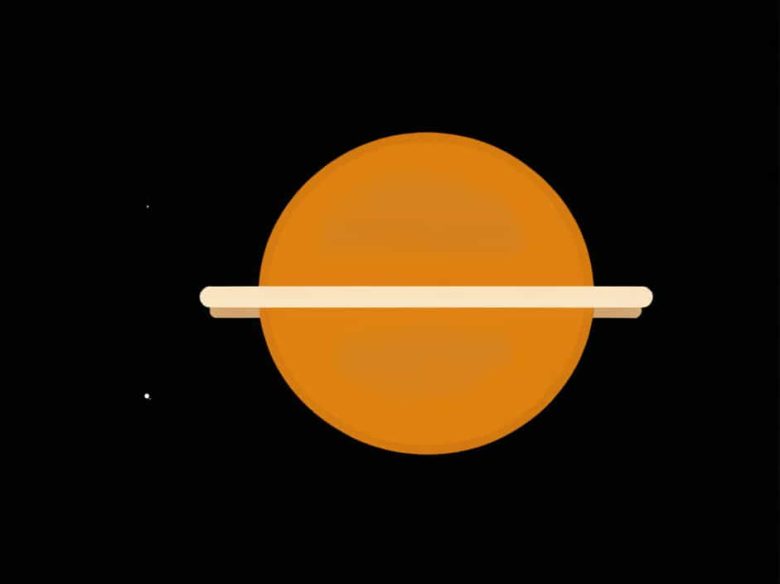Uranus, the seventh planet from the Sun, is known for its unique axial tilt and extreme seasonal variations. Unlike other planets in the Solar System, Uranus rotates on its side, causing its seasons to last for decades.
In this topic, we will explore why Uranus has such long seasons, how its tilt affects its climate, and what this means for the planet’s weather patterns.
1. What Causes Seasons on Uranus?
Seasons on any planet are caused by the tilt of its axis as it orbits the Sun. Most planets, including Earth, have a slight tilt, which creates moderate seasonal changes. However, Uranus is different.
A. Extreme Axial Tilt
- Uranus has an axial tilt of about 98 degrees.
- This means it essentially rotates sideways, with its poles sometimes directly facing the Sun.
- As a result, each pole experiences 42 years of continuous sunlight, followed by 42 years of darkness.
B. Long Orbital Period
- Uranus takes 84 Earth years to complete one orbit around the Sun.
- Because of this long orbit, each season lasts for about 21 years.
2. How Uranus’s Tilt Affects Its Seasons
The extreme tilt of Uranus leads to dramatic seasonal effects unlike those on any other planet.
A. Summer and Winter Extremes
- When a pole faces the Sun, it receives constant sunlight for 21 years, causing one hemisphere to heat up.
- Meanwhile, the opposite hemisphere remains in complete darkness, experiencing a long, cold winter.
B. Equinox Periods
- Halfway through its orbit, Uranus reaches an equinox, when the Sun is directly over the planet’s equator.
- During this period, day and night are equal across the planet, leading to more uniform temperatures.
C. Effects on Weather Patterns
- The extended sunlight and darkness affect wind patterns and atmospheric circulation.
- During equinox periods, the planet’s atmosphere becomes more active, with increased storms and wind speeds.
3. Comparing Uranus’s Seasons to Earth’s
To understand how unusual Uranus’s seasons are, it helps to compare them to Earth’s.
| Feature | Earth | Uranus |
|---|---|---|
| Axial Tilt | 23.5° | 98° |
| Orbit Period | 1 year | 84 years |
| Seasonal Length | ~3 months per season | 21 years per season |
| Sunlight Exposure | Alternates daily | Poles can receive 42 years of daylight or darkness |
This comparison highlights how Uranus’s extreme tilt and long orbit create seasons that last decades.
4. How Did Uranus End Up with Such a Tilt?
Scientists believe that Uranus’s extreme tilt was caused by a massive collision early in its history.
A. Giant Impact Hypothesis
- A large celestial body, possibly the size of Earth, may have collided with Uranus billions of years ago.
- This impact could have knocked the planet onto its side, permanently altering its rotation.
B. Additional Theories
- Some scientists suggest that gravitational interactions with other planets or moons could have played a role.
- Another possibility is that multiple smaller impacts gradually caused Uranus’s tilt.
5. The Impact of Uranus’s Seasons on Its Atmosphere
Uranus has a cold and dynamic atmosphere, with seasons influencing its temperature, cloud formation, and winds.
A. Temperature Changes
- Uranus is one of the coldest planets in the Solar System, with temperatures reaching -224°C (-371°F).
- Despite long summers, the planet doesn’t heat up significantly, likely due to a lack of internal heat.
B. Storms and Wind Patterns
- When Uranus reaches an equinox, its atmosphere becomes more active.
- Storms and high-speed winds (up to 900 km/h or 560 mph) can develop.
C. Cloud Movements
- Scientists have observed changes in cloud cover as different parts of the planet receive sunlight.
- The methane-rich atmosphere gives Uranus its pale blue-green color, with occasional cloud formations becoming visible.
6. How Scientists Study Uranus’s Seasons
Understanding Uranus’s long seasons requires long-term observation using telescopes and spacecraft.
A. Hubble Space Telescope Observations
- The Hubble Space Telescope has monitored Uranus over the years, capturing changes in its atmosphere and weather.
B. Voyager 2 Flyby
- In 1986, NASA’s Voyager 2 spacecraft provided the first close-up images of Uranus.
- It revealed a featureless atmosphere at the time, but later observations have shown seasonal variations.
C. Future Missions
- Scientists are considering new missions to Uranus, which could provide more detailed data on its climate and seasonal effects.
Uranus’s extremely long seasons are a direct result of its 98-degree axial tilt. This unique orientation causes 42 years of continuous sunlight followed by 42 years of darkness at each pole. Combined with its 84-year orbit, this leads to dramatic seasonal changes in temperature, wind patterns, and atmospheric activity.
Understanding Uranus’s unusual seasons helps scientists learn more about planetary formation, weather dynamics, and the impact of axial tilt on climate. With future space missions, we may uncover even more secrets about this fascinating ice giant.



